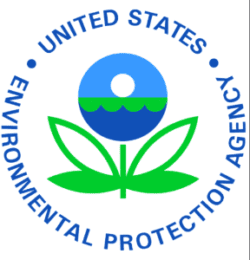Coral reefs are in decline in the U.S. and around the world.
Many scientists now believe the very existence of coral reefs may be in jeopardy unless we intensify our efforts to protect them (Frieler et al. 2013). Threats to coral reefs come from both local and global sources.
Local Threats to Coral Reefs
Most coral reefs occur in shallow water near shore. As a result, they are particularly vulnerable to the effects of human activities, both through direct exploitation of reef resources, and through indirect impacts from adjacent human activities on land and in the coastal zone. Many of the human activities that degrade coral reefs are inextricably woven into the social, cultural, and economic fabric of regional coastal communities.
Coral reefs face many threats from local sources, including:
- Physical damage or destruction from coastal development, dredging, quarrying, destructive fishing practices and gear, boat anchors and groundings, and recreational misuse (touching or removing corals).
- Pollution that originates on land but finds its way into coastal waters. There are many types and sources of pollution from land-based activities, for example:
- Sedimentation from coastal development, urban stormwater runoff, forestry, and agriculture
Sedimentation has been identified as a primary stressor for the existence and recovery of coral species and their habitats. Sediment deposited onto reefs can smother corals and interfere with their ability to feed, grow, and reproduce. - Nutrients (nitrogen and phosphorous) from agricultural and residential fertilizer use, sewage discharges (including wastewater treatment plants and septic systems), and animal waste
Nutrients are generally recognized as beneficial for marine ecosystems; however, coral reefs are adapted to low nutrient levels; so an excess of nutrients can lead to the growth of algae that blocks sunlight and consumes oxygen corals need for respiration. This often results in an imbalance affecting the entire ecosystem. Excess nutrients can also support growth of microorganisms, like bacteria and fungi, that can be pathogenic to corals. - Pathogens from inadequately treated sewage, stormwater, and runoff from livestock pens
Although rare, bacteria and parasites from fecal contamination can cause disease in corals, especially if they are stressed by other environmental conditions. Coral disease occurs in healthy ecosystems, but the input of pathogen-containing pollution can exacerbate the frequency and intensity of disease outbreaks. - Toxic substances, including metals, organic chemicals and pesticides found in industrial discharges, sunscreens, urban and agricultural runoff, mining activities, and runoff from landfills
Pesticides can affect coral reproduction, growth, and other physiological processes. Herbicides, in particular, can affect the symbiotic algae (plants). This can damage their partnership with coral and result in bleaching. Metals, such as mercury and lead, and organic chemicals, such as polychlorobiphenyls (PCBs), oxybenzone and dioxin, are suspected of affecting coral reproduction, growth rate, feeding, and defensive responses. - Trash and micro-plastics from improper disposal and stormwater runoff
Trash such as plastic bags, bottles, and discarded fishing gear (also called marine debris) that makes its way into the sea can snag on corals and block the sunlight needed for photosynthesis, or entangle and kill reef organisms and break or damage corals. Degraded plastics and microplastics (e.g., beads in soap) can be consumed by coral, fish, sea turtles, and other reef animals, blocking their digestive tracts and potentially introducing toxics.
- Sedimentation from coastal development, urban stormwater runoff, forestry, and agriculture
- Overfishing can alter food-web structure and cause cascading effects, such as reducing the numbers of grazing fish that keep corals clean of algal overgrowth. Blast fishing (i.e., using explosives to kill fish) can cause physical damage to corals as well.
- Coral harvesting for the aquarium trade, jewelry, and curios can lead to over-harvesting of specific species, destruction of reef habitat, and reduced biodiversity.
The aggregate effects of these stressors can decrease resilience of the reef overall and increase susceptibility to disease and invasive species. Invasive species can create an imbalance in the biological checks and balances of a reef ecosystem.
Global Threats to Coral Reefs
Increased ocean temperatures and changing ocean chemistry are the greatest global threats to coral reef ecosystems. These threats are caused by warmer atmospheric temperatures and increasing levels of carbon dioxide in seawater.
As atmospheric temperatures rise, so do seawater temperatures. This warming causes corals to lose the microscopic algae that produce food that corals need, placing stress on the corals. Without this algae coral also lose their coloration—a condition known as coral bleachingEXIT— because the loss of algae reveals the white color of the calcium carbonate structure underlying the polyps. Severe or prolonged bleaching can kill coral colonies or leave them more vulnerable to other threats such as infectious disease.
Other climate impacts, such as sea level rise, increased frequency and intensity of tropical storms, and altered ocean circulation patterns, can also affect coral reefs.
Ocean acidification refers to a change in ocean chemistry in response to the uptake of carbon dioxide from the atmosphere. The amount of carbon dioxide in the atmosphere is in equilibrium with that in seawater, so when atmospheric concentrations increase so do oceanic concentrations. Carbon dioxide entering seawater reacts to form carbonic acid, causing an increase in acidity.
Each year, the ocean absorbs about one-quarter of the carbon dioxide emitted from the burning of fossil fuels (oil, coal, and natural gas). Since the Industrial Revolution, ocean acidity has increased by about 30%, a rate that is more than 10 times what has previously occurred for millions of years. Further, ocean acidity levels are expected to increase by an additional 40% above present levels by the end of this century.
Increases in ocean acidity (measured by lower pH values) reduce the availability of dissolved salts and ions needed by corals to form the calcium carbonate structure. Consequently, coral growth and reef growth can be slowed, with some species affected more than others. If acidification becomes severe, coral skeletons can actually dissolve. On a local level, nutrient enrichment due to run-off from human activities on land can also cause increased acidity in coastal waters, exacerbating the effects of ocean acidification.




